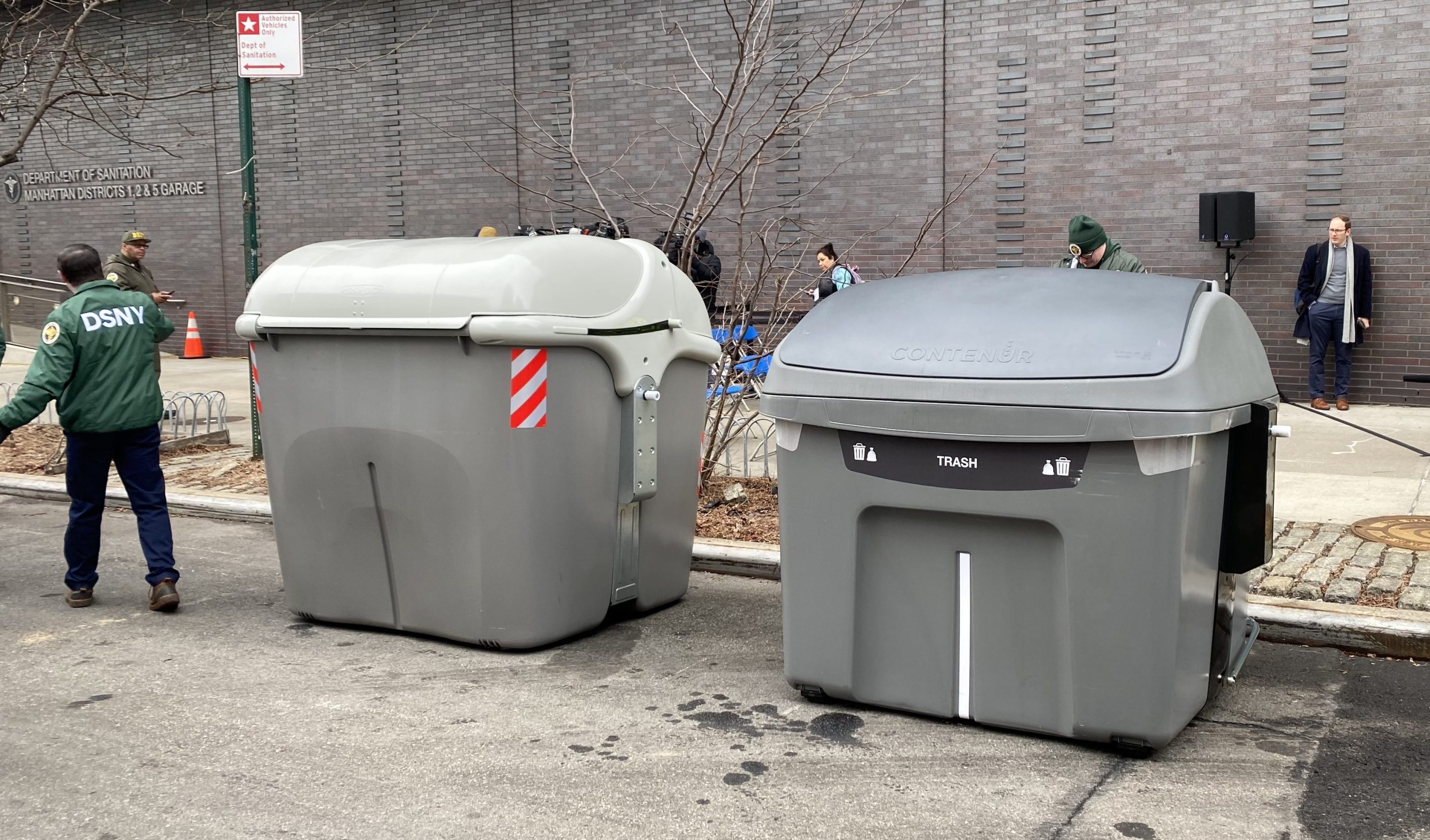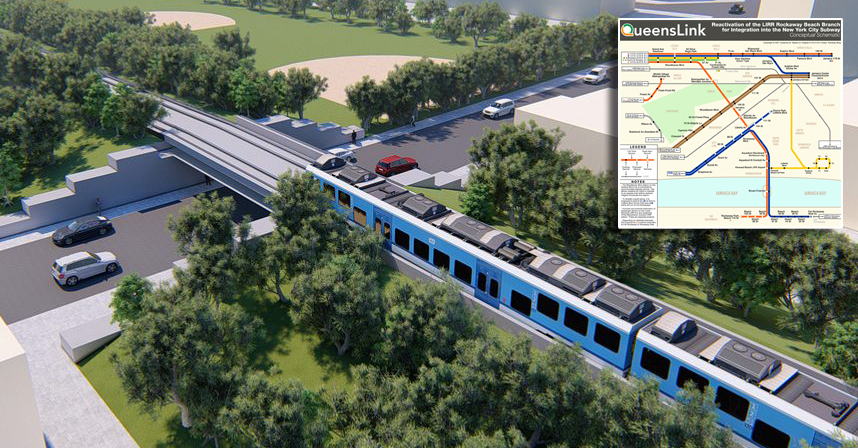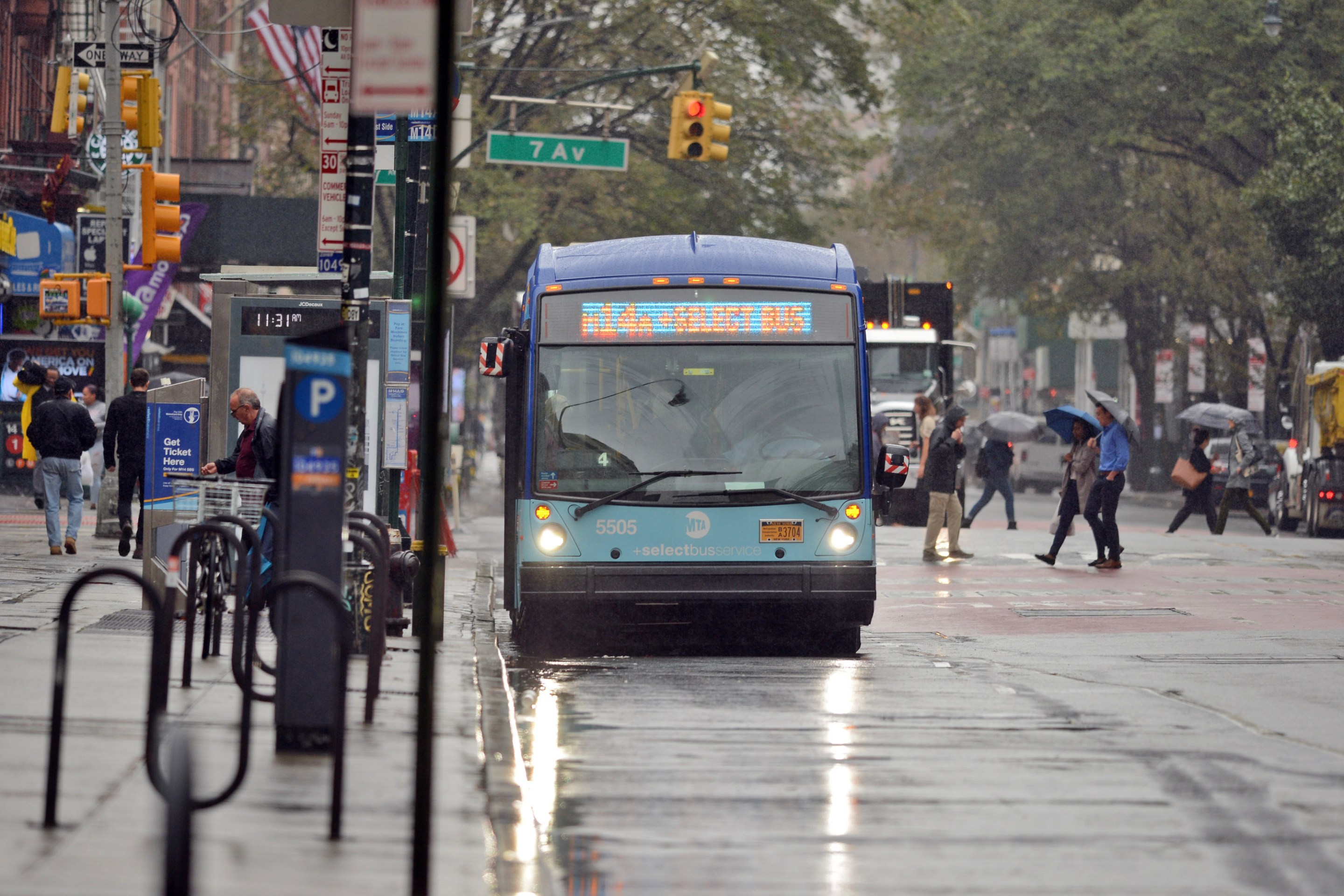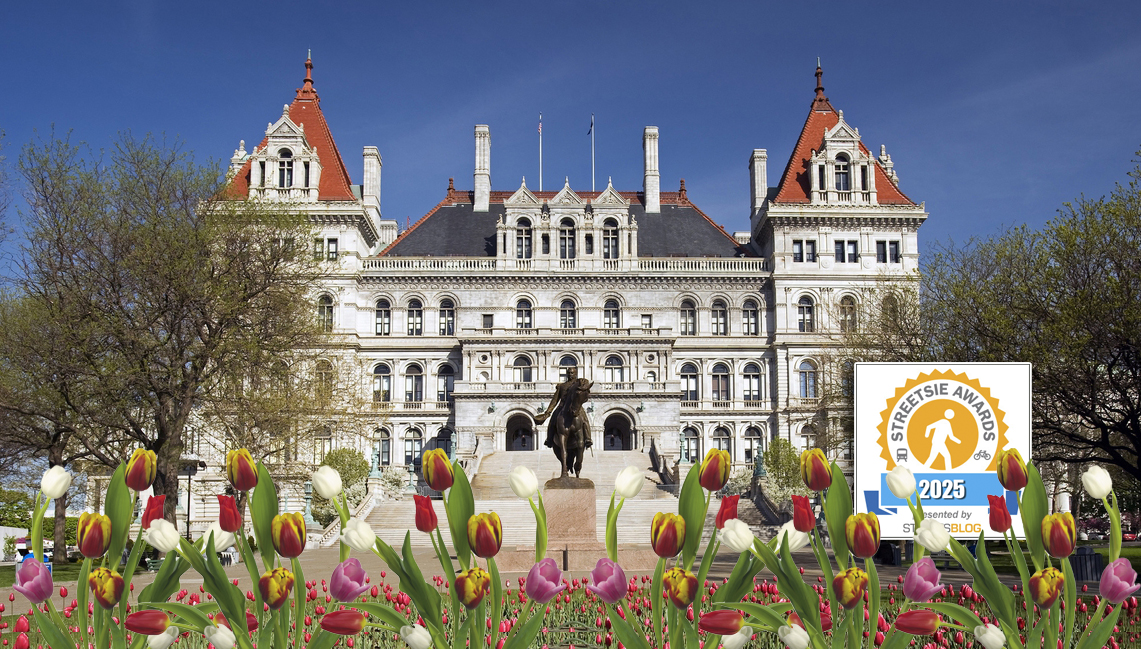The vast majority of apartments will get their trash collected from stationary bins in the curb lane — which some drivers believe is their space — as part of a city pilot program to put garbage in public space occupied by stored cars, Streetsblog has learned.
Nearly eight-in-10 apartment units in one uptown Manhattan district will get the much-anticipated containers that are commonplace in other world cities when the program fully rolls out by June 1. It's part of what the Department of Sanitation calls its "Trash Revolution" that seeks to trim the Big Apple's notorious five o'clock shadow of garbage bag piles covering pedestrian space every evening.
A subset of buildings whose owners got to choose between containers in the street or wheelie bins on the sidewalk mostly also went for repurposing some car storage with better trash collection — an indication that locals (or at least the owners of their buildings) are ready for a better way of rubbish disposal, said an area politician.
"The bins came, people are seeing a difference, and they want to see more of it," said Council Member Shaun Abreu, referring to an earlier, smaller pilot. "This is a necessary public good and it’s going to come at the expense of parking spots, and that’s a cost-benefit analysis that I’m willing to push forward on any given day."
DSNY previously began testing out shared large wheelie bins in the street on 10 blocks of Community Board 9 in 2023, but the incoming project will use sleeker stationary bins that can be hoisted by a fleet of 17 all-new side-loading collection trucks.
The project in CB9, covering West Harlem, Hamilton Heights, and Morningside Heights, will repurpose curb space that the city has for decades handed over to the storage of private vehicles — largely for free — which will require a political backbone at City Hall to not give in to drivers who have gotten used to that bonus.
"It’s really hard to overstate what a sweeping change this will be," said Joshua Goodman, the DSNY's deputy commissioner for Public Affairs and Customer Experience. "Black bags off the street, once and for all; bringing what has worked around the world for decades to the US for the first time. Only in New York!"
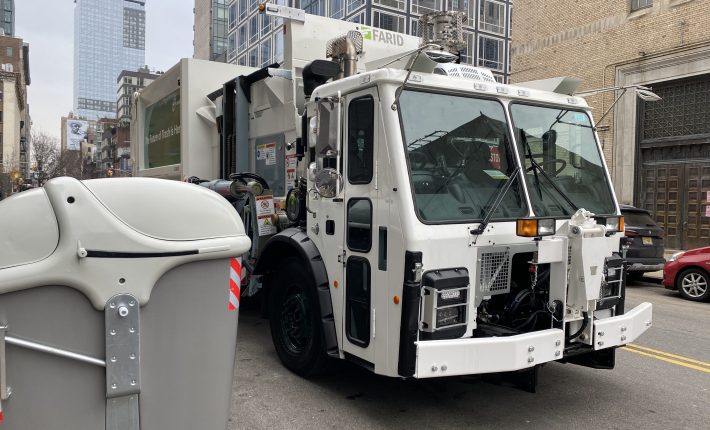
Cue the backlash
Removing these car privileges — be it for a few loading zones, a Citi Bike dock, or outdoor dining — frequently triggers backlashes from motorists and their enablers in the political class, but there is one promising signs that the neighborhood is buying into the idea of a better use for the curb: the owners of mid-sized buildings, i.e. those between 10 and 30 units, were allowed to choose between street-side bins or the Euro-styled sidewalk bins — and 51 percent opted to embrace the bins in the curbside lane.
Larger developments with 31 or more apartments must use the curbside containers under the agency's containerization program for the neighborhood, while smaller buildings with one to nine units have already had to use wheelie bins on the sidewalk since November citywide.
Livable streets advocates have long pushed to move more garbage containers into the street to prevent the pedestrian paths from becoming "bin city" littered with a Berlin Wall of wheelie bins.
Of the mid-size buildings, 352 of CB9's 685 chose curbside bins. Together with the larger apartment blocks, a whopping 35,000 out of the neighborhood's 45,000 dwelling units will have the new garbage collection in the curb lane, or 78 percent of the area's housing.
The trend shows that New Yorkers are willing to make way in the street for better trash collection, said one advocate who worked on a previous iteration of the city's containerization trials on one block of Hell's Kitchen that the city ended in 2023.
"It just validates what we had been saying and testing," said Christine Berthet, co-founder of Clinton Hell’s Kitchen Chelsea Coalition for Pedestrian Safety, also known as CHEKPEDS. "People don’t want garbage on the sidewalk, and it makes perfect sense to put it in the roadway."
The curb bins will be four cubic yards in size, covering about half the length of a car, and could replace up to 48 bags of garbage, according to Goodman, who provided this graphic.
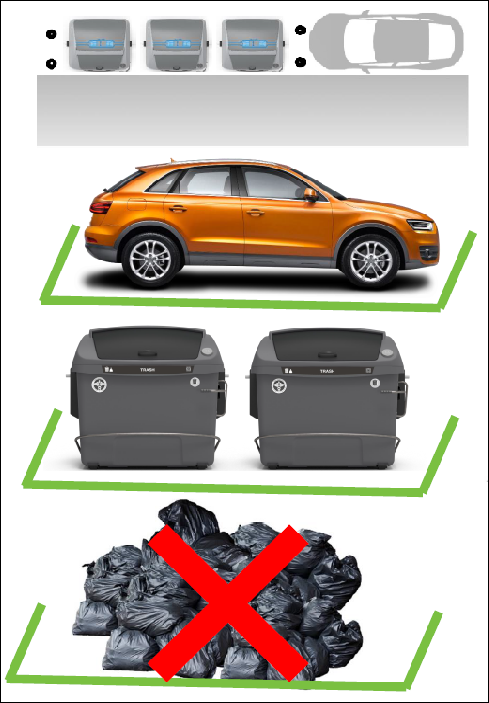
Only one bin each will be necessary for mid-size buildings and most larger buildings, occupying less than the space one car requires. The usual uproar over "parking" loss could be dampened by the fact that most building owners made the choice for the trash receptacles over vehicle storage, said Berthet.
"People inside the building would have to make the challenge to say, 'we have to replace the trash with cars,' and I don’t think that’s going to fly," the advocate said. "Even if you push back, that parking space could be used by somebody else, so is it really worth it?"
In a comprehensive 2023 report on containerization, DSNY estimated that some 150,000 car spaces would have to be repurposed to make way for 300,000 containers citywide — still less than 5 percent of the city's total parking spots.
But the agency now expects that number to be between 45,000 to 70,000 curbside bins, thanks to officials leaving recycling collection on the sidewalk and because each bin is assigned to a specific building — rather than the original plan of sharing containers across several buildings — which allows New York's Strongest to better gauge how many containers are needed, Goodman said.
Abreu hoped his neighborhood would become a blueprint for the rest of the city.
"When we see how well this will work in my district, we’ll then be able to scale this up in a way that works citywide," the pol said.
He's also co-sponsor of a bill with Brooklyn Council Member Crystal Hudson that would require buildings with 10 or more units to have on street containers by mid-2032, which he expects to come up for a vote in the coming weeks.
He's hoping that Mayor Adams — or whoever's in charge of the city later this year — will stick to his stated position that the parking-for-trash swap is a "small price to pay."
DSNY will begin installing the bins in April and May, and the pilot will last for one year through May of 2026.
